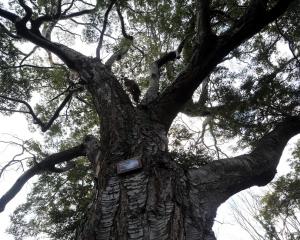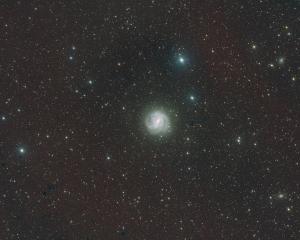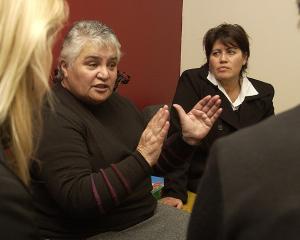
By the time Sue Courtney was diagnosed with bowel cancer she had been suffering extreme pain every time she ate for the previous six months.
"I was basically doing my pregnancy breathing every time I had food," Courtney (66), of Mosgiel, says with an ironic chuckle as she recalls the long months before her grade-4 bowel cancer was discovered in December, 2015.
Months of pain and inconclusive tests culminated in her being told she did not have enough points to qualify for a colonoscopy in the public health system and discovering she was covered by her private health insurance.
"I got in virtually straight away.
"[The doctor] said, I found it hard to get the colonoscope through; you’ve got cancer."
She remembers feeling shocked, numb. But her response was, "Well, let’s get on with it".
Eight days later, Courtney was on the operating table.
The surgeon removed the cancerous portion of bowel.
But further tests showed the cancer had spread to her lymph nodes and liver.
"I was told I had a 40% chance of survival. I refused to hear that."
Highly pertinent to her life-or-death experience, or perhaps not relevant at all, is a new report by the parliamentary commissioner for the environment Simon Upton.

His finding — too often, we don’t even know where to look or what chemicals and harms to look for.
More than 30,000 chemicals are approved for use in New Zealand, but only about 200 chemicals are routinely tested for, Upton states in his report, "Knowing what’s out there — Regulating the environmental fate of chemicals".
Almost 35 years ago, the United States created the first inventory of pollution. Since then, every developed country has created its own pollution release and transfer register — except New Zealand.
On paper, the country has a robust system to scrutinise the potential risks of new chemicals, Upton says. But many chemicals in use for decades have not been closely assessed. And much of the science on their environmental impact has changed.
The reality, he says, is lots of gaps in the way we monitor chemicals in the environment and interpret their impact on living things.
"Of the monitoring that is done, there is little feedback to the chemical management system that determines how chemicals are used," Upton says.
“While not all chemicals present a high level of concern, there is a lot we don’t know about chemicals reaching our environment, including how much is used, where they are used, and the effects they are having."
Could Courtney’s bowel cancer have been caused by chemicals in the environment? Perhaps nitrate?
Nitrate is a chemical made of nitrogen and oxygen. It occurs naturally in soil, helping plants grow.
It is also manufactured and sold as an important agricultural fertiliser.
In New Zealand, as well as other farming countries, as agriculture has intensified, run-off and leaching has increased nitrate contamination in groundwaters, lakes and rivers.
In waterways, nitrate can cause excess weed growth and algal blooms. It can also be toxic for fish and invertebrates. If it is in high enough concentrations in drinking water, it can be a health risk for people too.
Bottle-fed babies are at risk of "blue baby syndrome"— a lack of oxygen in the blood. To prevent that, the nitrate limit in drinking water has been set at 11.3mg/L nitrate-nitrogen.
But nitrate in drinking water has also been implicated as a possible cause of colorectal, or bowel, cancer — and at much lower contamination levels than the minimum set in the New Zealand drinking water standards.
The link, however, is not clear.
As a result, during the past couple of years, a low-level running battle has developed over whether nitrate is a cancer risk.

Dr Chambers and colleagues estimated up to 800,000 New Zealanders could be drinking water with nitrate levels that increase their risk of that cancer. They also estimated it could be causing up to 100 cases of cancer and 40 deaths each year.
Countering that, in August last year, research carried out by New Zealand crown research ESR scientists, jointly funded by Fonterra and the Ministry of Business, Innovation and Employment, concluded that, based on existing evidence, it was "highly unlikely" nitrates in drinking water or food increased bowel cancer risk.
This month, Dr Chambers and crew fired back with a paper in the Australian and New Zealand Journal of Public Health, saying the formation of cancer-causing chemicals in the gut could be the key to understanding how high levels of nitrate in drinking water could increase the risk of bowel cancer.
Could this be why Courtney had to endure, over the course of almost a year, an operation that removed part of her bowel, another operation for a cyst on the scar, six rounds of chemotherapy, a liver operation and another six rounds of chemotherapy?
Dr Chambers admits nitrate, if it does contribute, plays a "very small part" in the overall risk factors for bowel cancer. Smoking, being overweight, drinking alcohol or hereditary factors are much more common causes.
"However, nitrate is one of our most common contaminants in New Zealand, and ultimately no-one should be getting sick from their drinking water," Dr Chambers says.
"Thus, we advocate for a precautionary approach until further evidence comes to light."
There are major information gaps when it comes to nitrate in water.
Years ago, it was decided that if drinking water testing programmes in the eight years to 2004 showed nitrate levels at less than half the 11.3mg/L level, ongoing testing was no longer required.
It means that in 2020, water suppliers serving only 1% of the country’s population had ongoing testing for nitrate levels.
"This is particularly problematic for research into bowel cancer at nitrate levels as low as 1mg/L," Dr Chambers says.
Which is the point he, and indeed Upton, are making. We don’t have the information, so we don’t know.
Nitrate is just one example.
As part of Upton’s investigation, the commissioner and his team researched four chemical substances — the neonicotinoid class of insecticides, tetracycline antibiotics, the herbicide terbuthylazine and the metal zinc.
They were chosen — somewhat at random, but covering different uses and different end points — as case studies of the way chemicals are used in New Zealand, the way they are regulated and their impacts on the environment.
All pose some environmental risks, and each is monitored in a different way and to differing degrees.
The report questions whether those different approaches — and in particular some of the data and knowledge gaps — can be justified.
In the case of neonicotinoid insecticides, entomologist Anthony Harris, who has read the report, is forthright.
"Neonicotinoids are killing off huge proportions of insects worldwide," the Otago Museum honorary curator says.
Harris quotes an article by environmental journalist Dr Stephen Leahy showing the US agricultural landscape is 48 times more toxic to honeybees than it was 25 years ago, because of the widespread use of neonicotinoids.
"In the 1960s, there were vast clouds of moths flying around all outdoor lights in summer. Now there are hardly any," Harris says.
"Even two decades ago, when one drove to the Catlins, say, during daytime in summer, it was necessary to put on the windscreen wipers to remove the countless insects from the windscreen.
"That never happens today. The insects just aren’t there."
To plug the gaping gaps in information, to find out how much of what chemicals are being used, to find out what harms are being done and to undo those harms, the commissioner has made several recommendations.
Upton is recommending that all agencies dealing with chemicals, along with Maori, develop a common framework to do that job.
"My specific recommendation is that the Ministry for the Environment should develop regulations to require and empower the EPA to collate, collect and report on the quantity and use of chemicals in New Zealand."
To gauge the scale of a chemical’s use in New Zealand, he recommends collecting and reporting data throughout a chemical’s life cycle. This would require importers, manufacturers, and sellers of chemicals to report on chemical quantities.
“We also need to do a better job of setting limits for acceptable concentrations of chemicals in the environment and monitor whether these levels are being exceeded.
“If we make these adjustments to the system we should be able to see when problems occur and amend conditions as new information arises.”
Amen to that, Dr Chambers says.
He and his fellow researchers have recently made similar recommendations to the new national water body, Taumata Arowai.
"The report points out that the current regulatory monitoring system is fragmented and incomplete," Dr Chambers says.
"These are points we have also flagged in relation to drinking water surveillance and standard setting. In particular, that there should be more extensive testing for key contaminants in New Zealand’s drinking water."
He says centralised reporting would also help link environmental and health data — an important step in getting to the bottom of any connection between nitrate and bowel cancer.
The shock of having bowel cancer did not hit Courtney until all the operations and therapy had finished.
Up to that point, she was busy coping with it all. She also had plenty of access to medical professionals for questions and advice.
"Then all of a sudden, there’s nothing. You feel very vulnerable."
The impacts are lingering, some will remain.
But five years on, the opinion of her specialist is that, against the odds, "I think you’ve kicked this".
What caused the cancer? Could nitrate be implicated?
"It would be good to know more," Courtney says.











